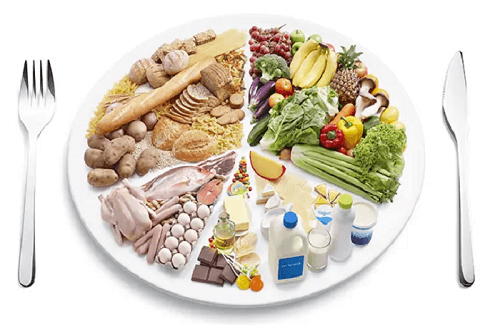Food DefinitionFood is a basic necessity of life, providing energy and nutrients to maintain the human body's physiological and metabolic functions. The definition of food is broad, as it encompasses all substances that humans, plants, and animals can consume. Food can be defined as any material that provides nourishment for the growth and maintenance of life, including repairing tissues, producing hormones, and regulating body temperature. 
Food can be classified into several categories based on its composition: carbohydrates, proteins, fats, vitamins, minerals, and water. These food components are essential for maintaining health, as they play critical roles in the human body. Carbohydrates provide the body with energy, proteins are essential for growth and repair, fats are a source of energy and help to absorb and transport fat-soluble vitamins, vitamins are essential for maintaining good health, and minerals help regulate metabolic processes. Our food is important for providing nutrients and maintaining a balanced diet. A balanced diet provides the right amount of essential nutrients while controlling the intake of harmful components such as sugar and saturated fat. A balanced diet should include various foods from all groups, including fruits and vegetables, grains, dairy products, proteins, and fats. Fruits and vegetables are essential to a healthy diet, providing the body with vitamins, minerals, and fibre. Fruits and vegetables are also low in calories and fat, making them a great choice for those trying to maintain or lose weight. Grains are an important source of carbohydrates and fibre and can be consumed as bread, pasta, rice, and cereal. Dairy products provide the body with calcium, which is important for strong bones and can also be a source of protein. Proteins are essential for the growth and repair of tissues and can be obtained from animal sources such as meat, poultry, fish, and dairy products or from plant sources such as legumes, nuts, and seeds. Fats are also essential to a balanced diet, as they help absorb and transport fat-soluble vitamins and provide the body with energy. Food preparation is also important to consider, as it can affect its nutritional value and healthfulness. Cooking methods such as boiling, grilling, and baking are healthier options than frying, as they preserve the nutritional value of food and do not add unhealthy fats. Additionally, oils and fats in cooking should be limited, as they are high in calories and unhealthy fats. Food can also be defined in its origin and history, as different cultures have unique cuisines and food traditions. Regional cuisines are a reflection of local ingredients and cooking methods and often incorporate the use of spices and herbs to add flavour. For example, Mediterranean cuisine is known for using olive oil, fresh fruits and vegetables, and various herbs and spices. In contrast, Indian cuisine is known for its use of aromatic spices, lentils, and rice. Food is also important in social and cultural life, as it brings people together for meals, celebrations, and special occasions. Sharing food is an act of hospitality and is an important way of connecting with others and forming relationships. Food is also used to celebrate important events, such as holidays and birthdays, and can play a central role in religious and spiritual practices. Finally, food can also be defined in terms of its environmental impact. Food production, transportation, and disposal significantly impact the environment, including using land, water, and energy resources and producing greenhouse gases and waste. Different Types of Food
Food can be classified into several categories based on its composition, origin, and preparation method. Some of the common types of food include:
History of FoodThe history of food is a long and complex one that dates back to the earliest human civilizations. Food has always played a vital role in human societies, not just as a source of sustenance but also as a means of expressing cultural identity and social status. Prehistoric humans were hunter-gatherers who relied on the natural resources available in their environment for food. They hunted animals and gathered plants for sustenance, and their diets varied depending on their region. Over time, humans began to domesticate plants and animals, which led to the development of agriculture and animal husbandry. This was a significant turning point in the history of food, as it allowed for the cultivation of crops and raising animals in a controlled environment. The development of agriculture and animal husbandry gave rise to the first human civilizations in ancient Egypt, Mesopotamia, and China. These early civilizations had highly developed food systems, with crops being grown and harvested on a large scale and food being traded between regions. In ancient Egypt, for example, the Nile River provided the water and silt necessary for farming. Ancient Egyptians developed a highly efficient irrigation system to ensure their crops thrived. They also domesticated cattle, sheep, and goats, used for food and as draft animals. Food was an important aspect of social and cultural life in ancient Greece and Rome. The Greeks developed a highly sophisticated cuisine, with different dishes and ingredients associated with different regions and social classes. On the other hand, the Romans greatly emphasized feasting and entertainment, with lavish banquets being a common feature of upper-class Roman life. Both societies placed great importance on the quality and presentation of food, with chefs and cooks being highly respected. Food became an even more important aspect of daily life in the Middle Ages, with feasting and banqueting becoming commonplace. This was particularly true of the nobility, who used food to display their wealth and status. The Middle Ages saw the development of new cooking techniques, such as roasting, baking, and braising, and the use of spices and herbs to add flavour to dishes. During this period, the first cookbooks were written, providing instructions on preparing and cooking different dishes. During the Renaissance, food was an important aspect of daily life, with the wealthy and powerful using food to display their status and sophistication. The Renaissance saw the development of new cooking techniques and the introduction of new ingredients, such as tomatoes and potatoes, which had been brought back from the Americas. During this period, the first coffeehouses and tea shops were opened, which provided a new way for people to socialize and enjoy food and drink. In the 18th and 19th centuries, the Industrial Revolution changed how food was produced and consumed. Technology and transportation advances allowed food to be produced much larger. New preservation techniques, such as canning and refrigeration, made storing and transporting food over long distances possible. This led to the development of new food products, such as canned meats and vegetables, and the rise of the modern food industry. The 20th century saw further changes in how food was produced and consumed with the rise of fast and convenient foods. These new food products were designed to be quick and easy to prepare and were often heavily processed and loaded with preservatives and other additives. While these new food products were popular with consumers, they also raised concerns about their impact on health and the environment. Difference Between Food Habits of Ancient and Modern TimesThe food habits of ancient times and modern times have undergone significant changes. The early humans were hunter-gatherers, and their diet consisted of foods in their immediate environment. With the advent of agriculture and animal husbandry, humans settled in one place, significantly changing their food habits. Firstly, the food habits of ancient times were highly dependent on food availability. Early humans had to rely on hunting, fishing, and gathering for food, so their diets were highly varied and seasonal. On the other hand, modern food habits are not dependent on seasonal changes or food availability. With modern transportation and food processing techniques, importing food from different regions and countries is now possible. This has led to a much wider variety of food options for people, regardless of the time of year. Secondly, the food habits of ancient times were largely dictated by necessity. People ate what was available, and their diets often lacked certain nutrients and vitamins. In contrast, modern food habits are often driven by choice, and people have the luxury of selecting foods based on nutritional value, personal taste preferences, and cultural background. This has led to a greater emphasis on the nutritional value of food, with people becoming more aware of the importance of a balanced diet and healthy eating habits. Thirdly, how food was prepared and consumed in ancient times differed greatly from modern times. In the past, food was often prepared over an open fire or in an oven, using simple utensils and equipment. Today, cooking has become much more sophisticated, using modern appliances and technology such as ovens, microwaves, and blenders. Modern food preparation methods also often involve using spices and herbs, which were not readily available in ancient times. Fourthly, in ancient times, food was often prepared in large quantities and served in family style. People would gather together to share a meal, and there was a strong emphasis on communal eating. In modern times, meals are often prepared individually and served in smaller portions. This is partly due to the nuclear family's rise and societal norms' changes. However, communal eating is still practised in many cultures and remains an important part of social life. Fifthly, old food habits were also characterized by using traditional cooking methods and ingredients. This often resulted in meals that were rich in flavour and texture but may have lacked nutritional value. In contrast, modern food habits have developed many new ingredients and techniques, creating more complex and nutritious dishes.
Next TopicForce Definition
|
 For Videos Join Our Youtube Channel: Join Now
For Videos Join Our Youtube Channel: Join Now
Feedback
- Send your Feedback to [email protected]
Help Others, Please Share










